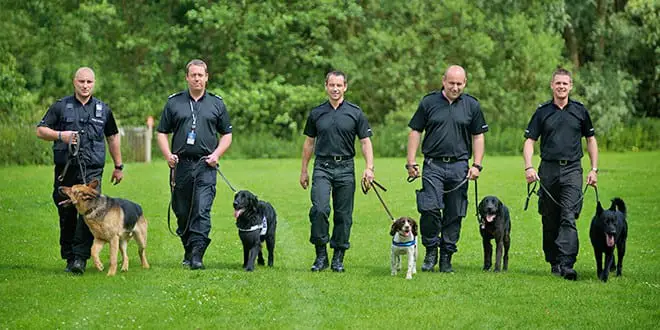Are You Making These 10 Training Mistakes?
written by: pboysen1310
Training a dog successfully is an art form in and of itself. Taking the time to show your dog the importance of behavior and routine makes life easier for both of you, because dogs function best when they know their boundaries. Natural pleasers, they dislike the confusion that comes when boundaries are unclear. By establishing those lines clearly, you strengthen your relationship. Here are 10 common mistakes that people make when training their dogs, so that you can avoid them when raising your own furry friend.
1. How much training do you do?
Many dog owners go through the basic routines and behaviors to puppies or dogs new to the home. However, once the dog ages a bit and the connection settles, it is easy to get lazy about ensuring that those behaviors stay consistent. This means that response times increase for some behaviors, and that sometimes the dogs won’t respond at all. This is not malicious on the part of your dog; it simply means that you need practice. Finding new ways to build training into your life with your dog helps you both to remember the proper behaviors.
2. Do you find yourself repeating commands?
This is frustrating for many dog owners: you’ve taught a specific behavior, such as sitting. However, your dog gets confused or distracted and fails to respond correctly the first time you give the command. You repeat it, and finally the dog sits down. This often takes place with behaviors that have not received full instruction. Repeating a command to a dog suggests that it is all right to ignore the first one or simply to ignore repeated commands. The keys: do not give a command that you can’t enforce, and do not repeat commands.
3. Does training frustrate you?
If you get upset during training, your dog can sense this and start to pull back from the learning process. This isn’t a lack of obedience; instead, it comes from a combination of frustration and fear on the dog’s part. Before you become frustrated, take a deep breath and relax, or bring the training session to an early halt. You can take it up again after you have figured out the issues.
4. Is your training reactive?
To train your dog successfully, you need persistence, practice and time. If you wait until a problem with your dog spirals into chaos, you are going to have a much more difficult time than you would have if you proactively targeted that sort of behavior. This approach helps you intervene before the behavior starts to be an issue.
5. Do you correct your dog too quickly?
Teach the dog your commands before you start correcting. This will ultimately hinder his progress, because he won’t understand what you are saying.
6. Do you forget to reward the right behavior?
Immediate praise is the most effective reward that a trainer can give a dog. Without any sort of reward, your dog won’t know that he did the right thing!
7. Do you expect too much too quickly?
If you watch dogs and their trainers on television, you might expect your dog to do the same sort of fascinating tricks. Significant amounts of money and time went into training those dogs for television, and expecting your dog to produce those same results is simply unrealistic.
8. Are your rules consistent?
A common example of this involves a pet jumping up on people. Do you only correct your dog when you’re in your nice suit or Sunday clothes? You need to correct it all the time, not just when you’re wearing nice clothes. Your dog can’t differentiate between your business suit and your sweat pants, so enforce rules regularly.
9. Do you give up too soon?
Training takes time, so don’t give up on the process before you should. You might think that your pet will never learn that trick. However, different dogs take different amounts of training. If you stick with it, your dog will learn everything you want him to.
10. Does your dog get enough attention?
If your dog is an outside animal, it’s easy to forget that he’s out there, so all you’re training him to do is dig holes when he’s bored. Keep your dog in view as much as possible, and place him in a room where it’s not possible for him to damage things while you are gone.
Avoiding these 10 dog training mistakes will help you go a long way toward training your dog most effectively. If you have specific questions about your animal, talk to your vet to get the best insights.


